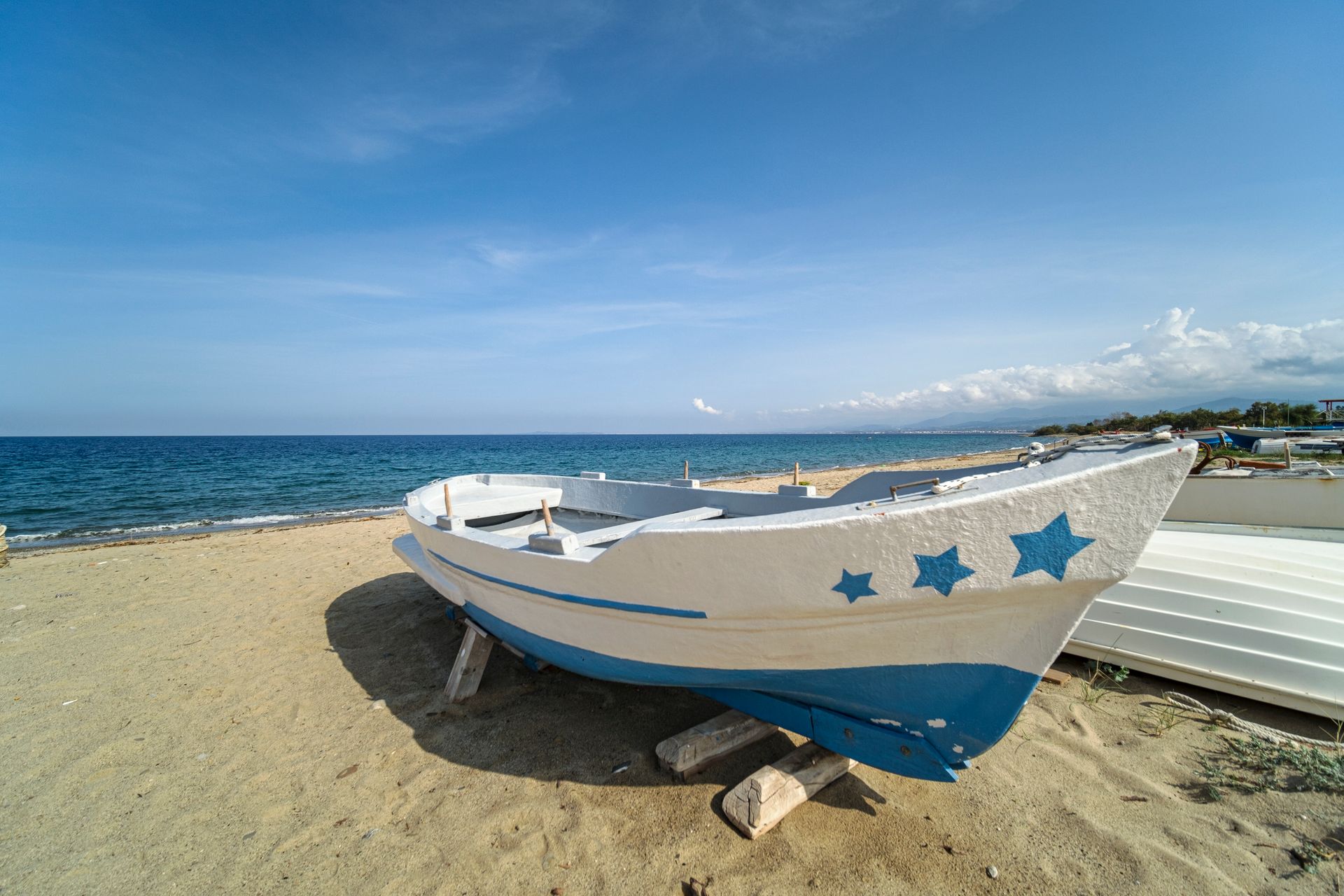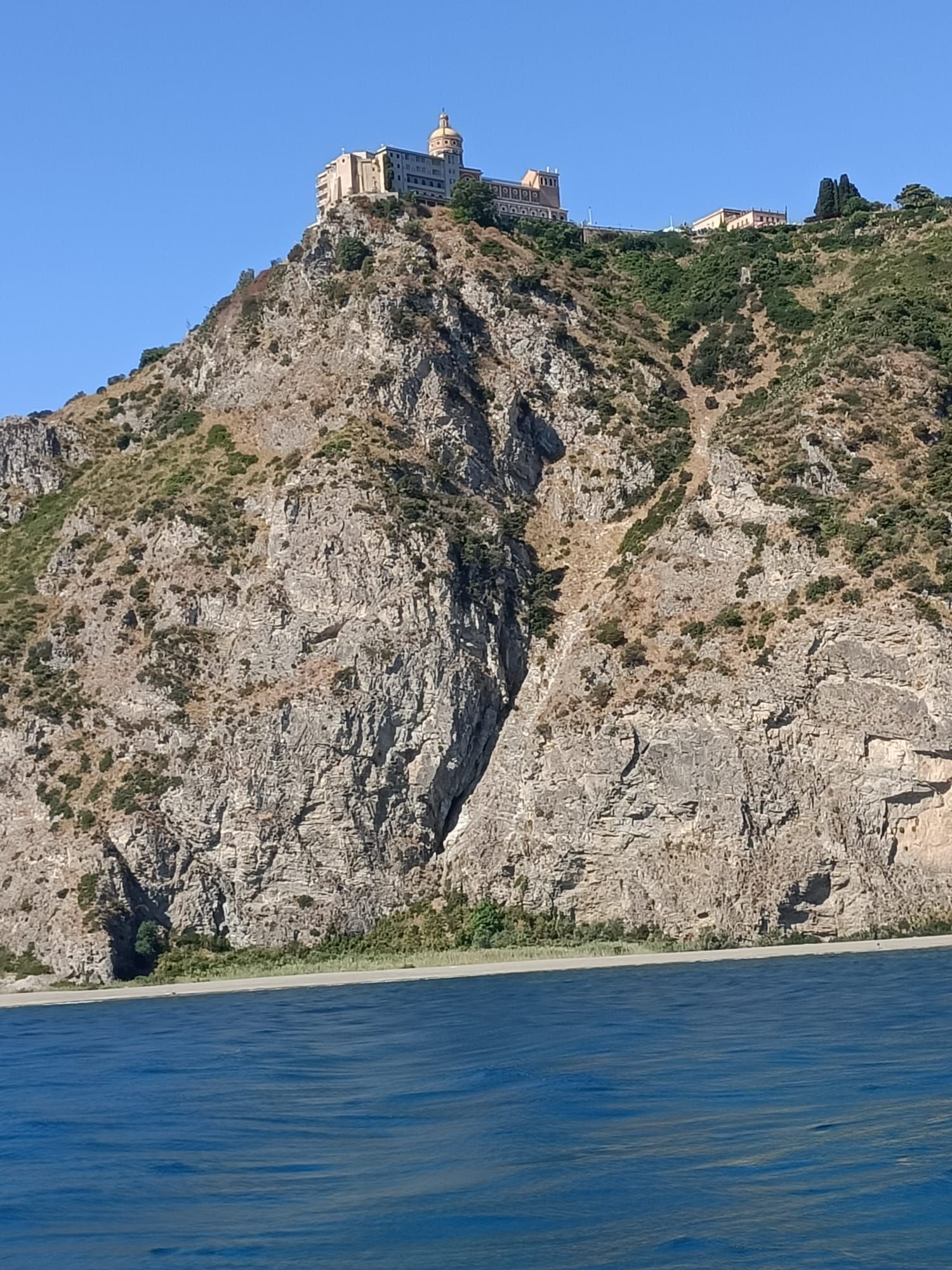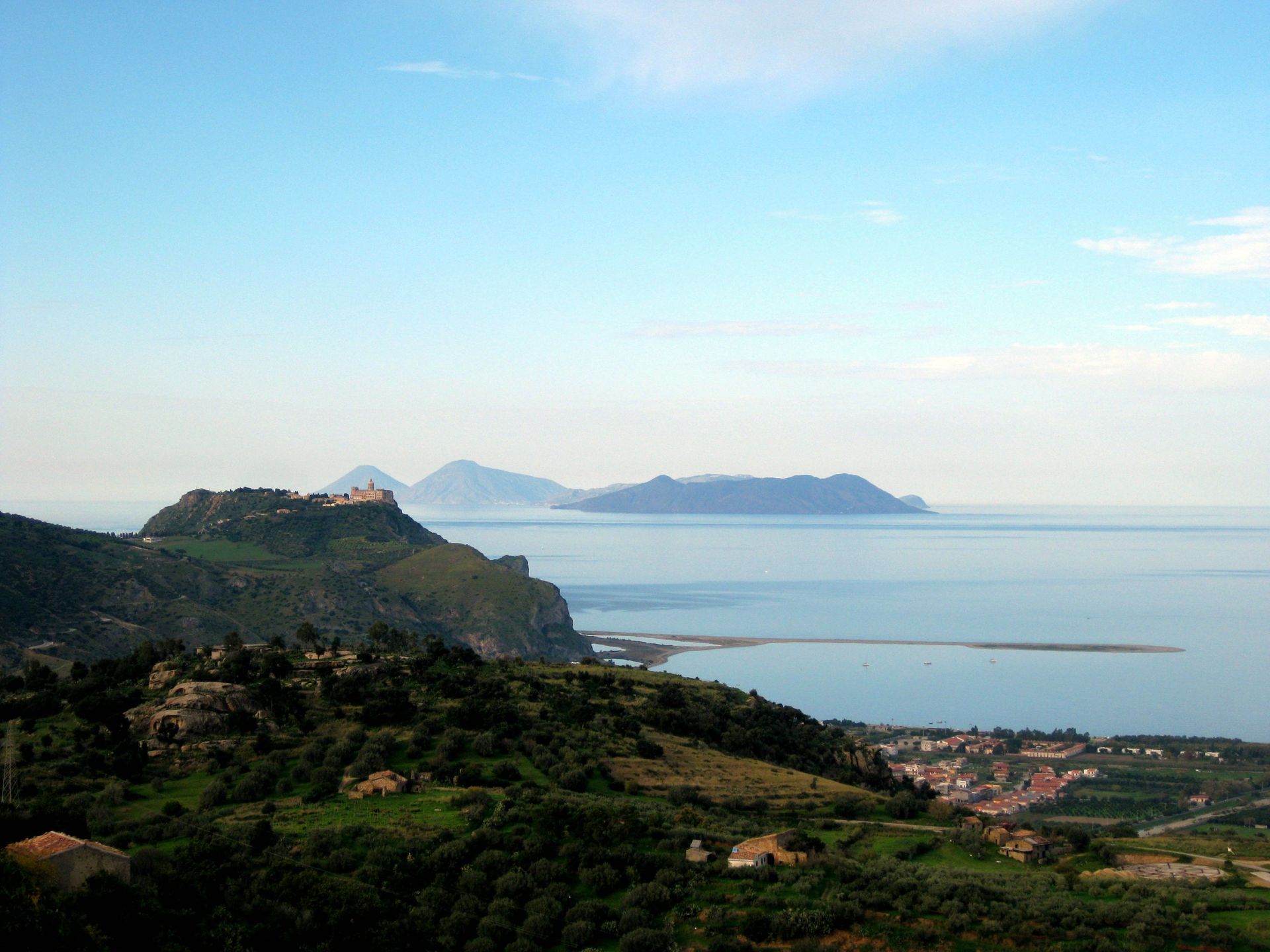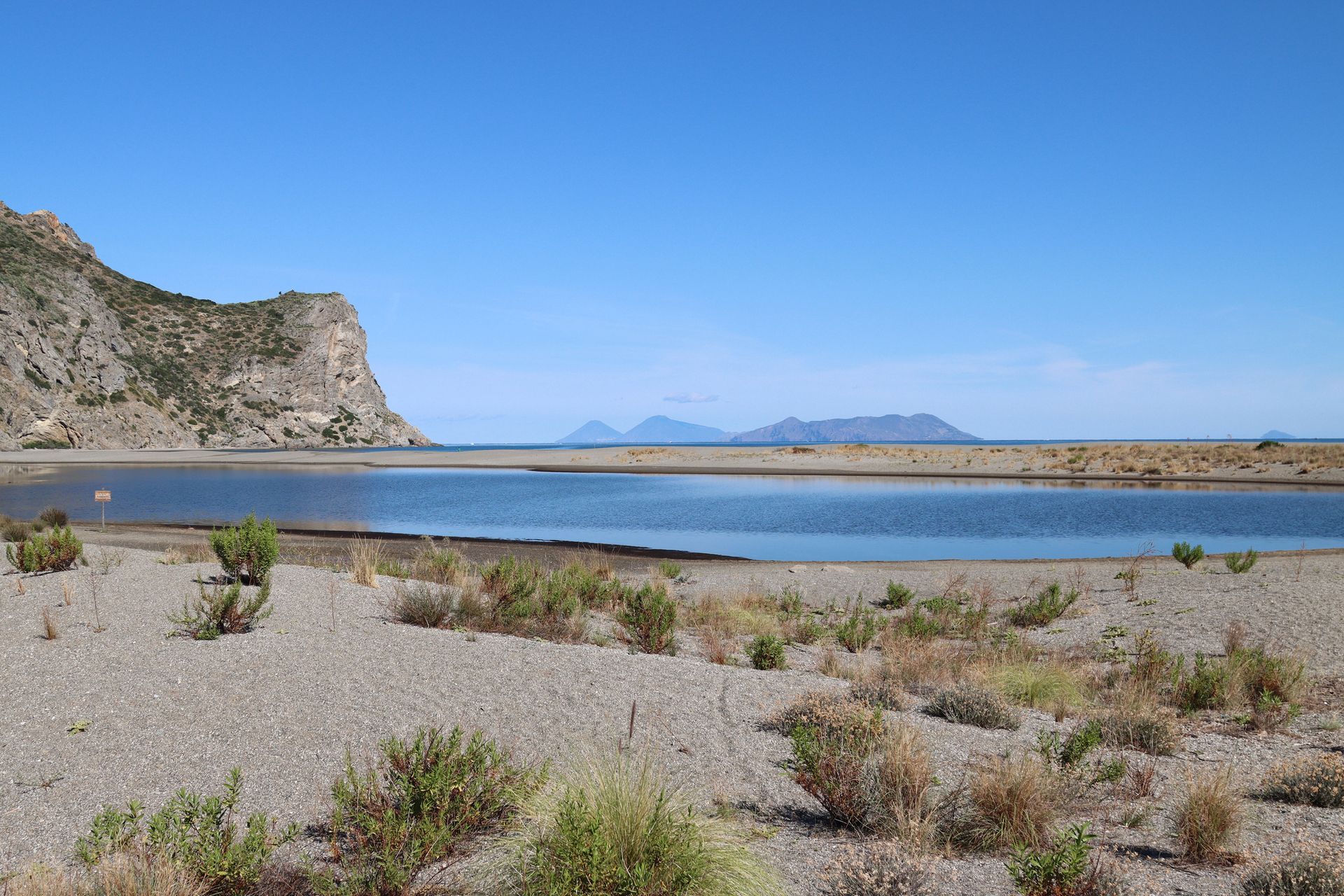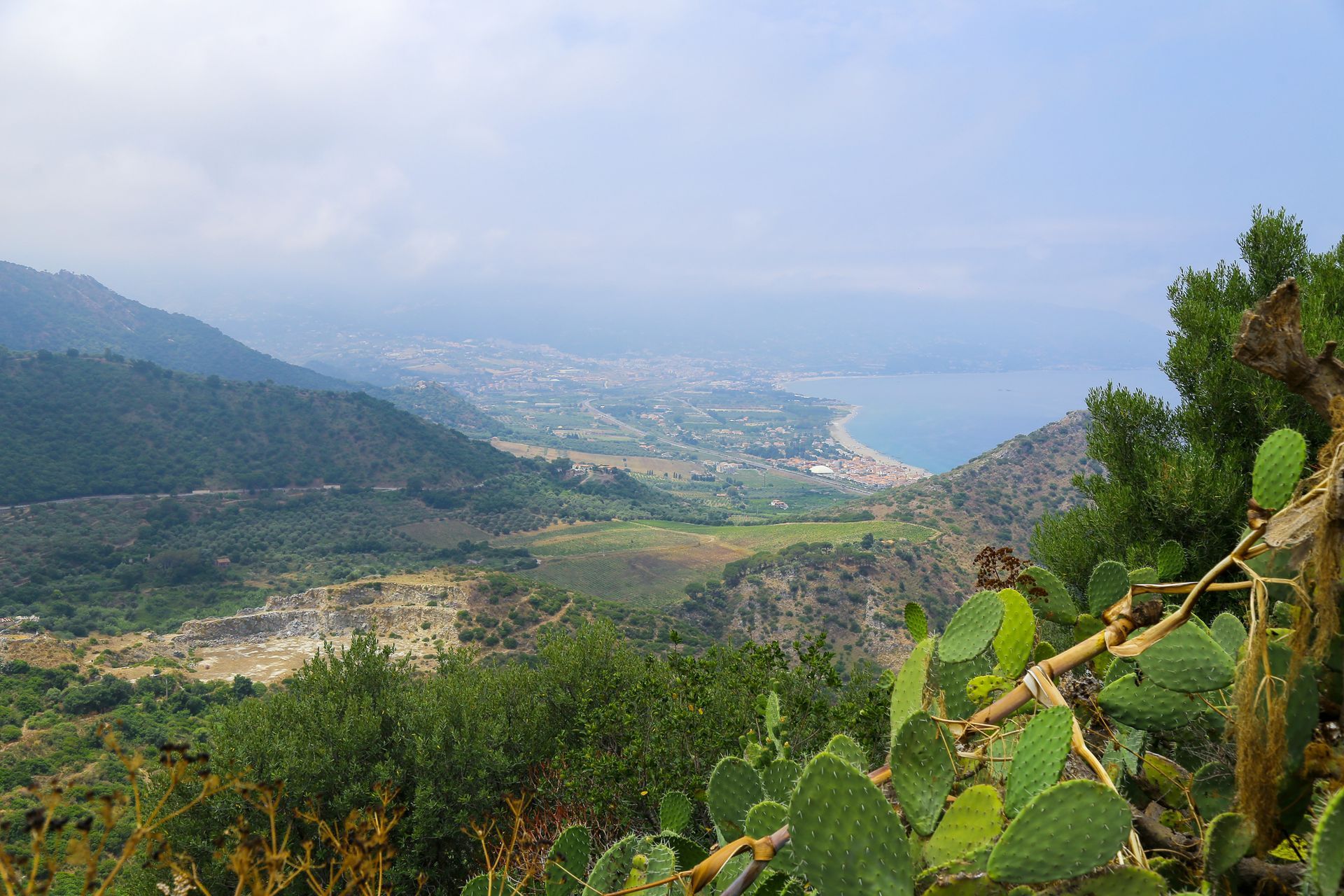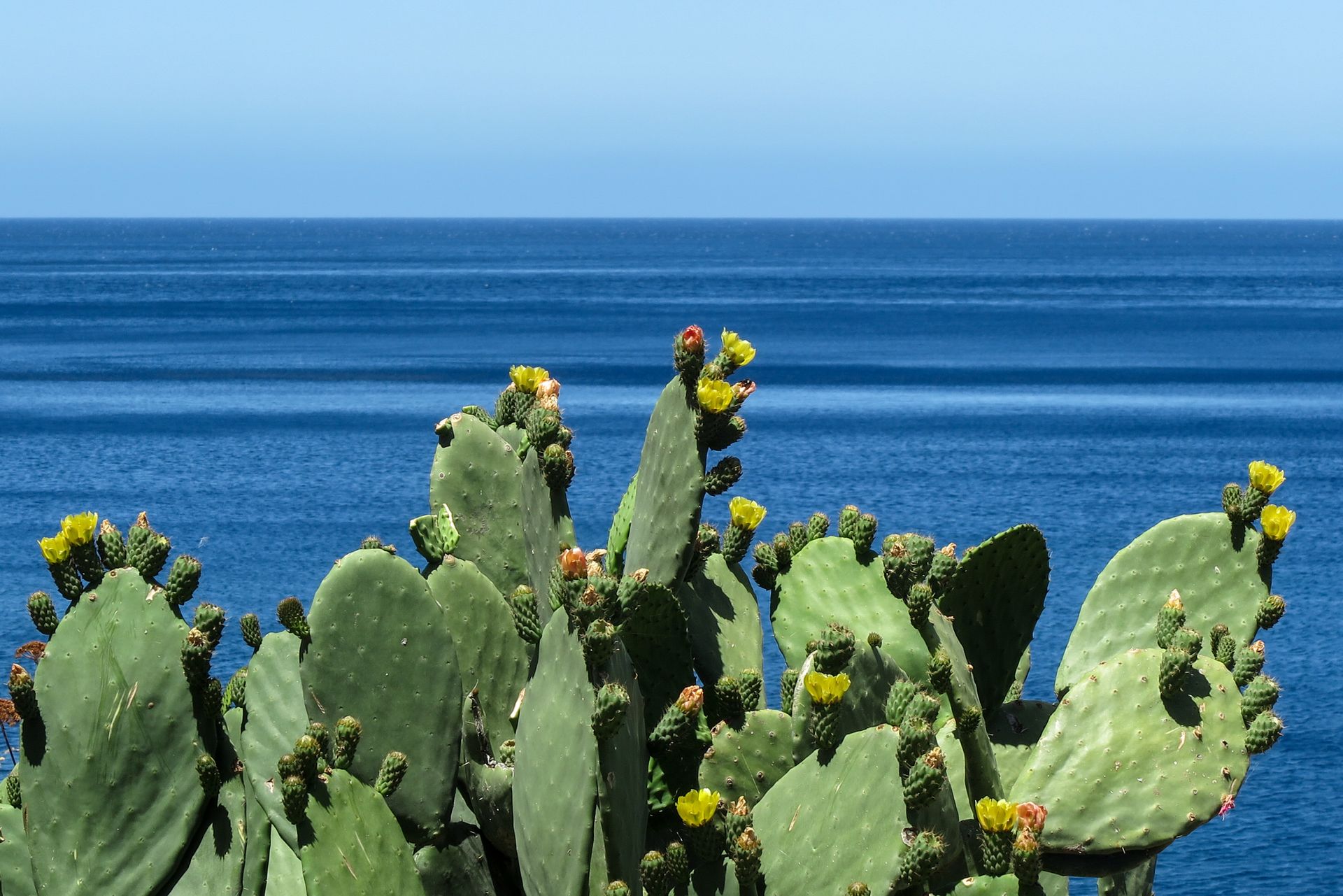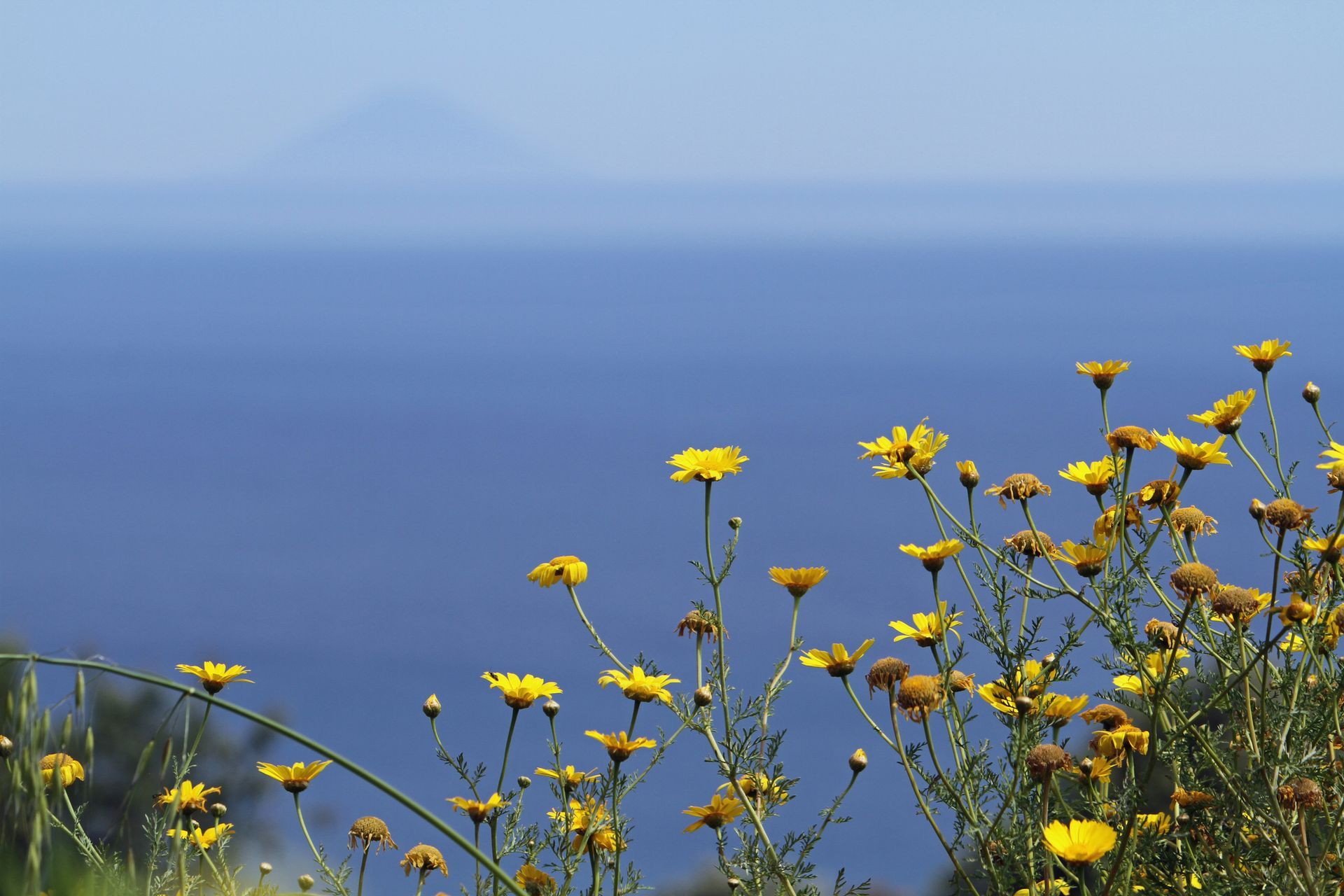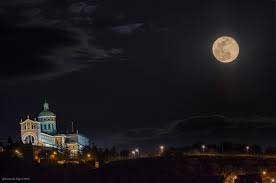Excursions and holidays in Tindari
Oliveri (ME)
"Tindari, I know you are gentle, between broad hills hanging over the waters of the god's sweet islands, today you assail me and bow to my heart."
Salvatore Quasimodo
What to see in Oliveri and its surroundings
There are places in Italy, like in Sicily, that are unknown, that you don't even know exist. Then when you go there by chance, or by hearsay... you fall in love with it. This is what happens to those who arrive for the first time in Oliveri .
A small town on the sea, in the province of Messina, bordering the beach and Laghetti di Marinello . These are located right under the famous Sanctuary of Tindari .
The town is an ideal place to enjoy days of relaxation, and the sea and sun that Sicily offers, as well as overlooking the sea, it is very quiet and you can take beautiful bike rides.
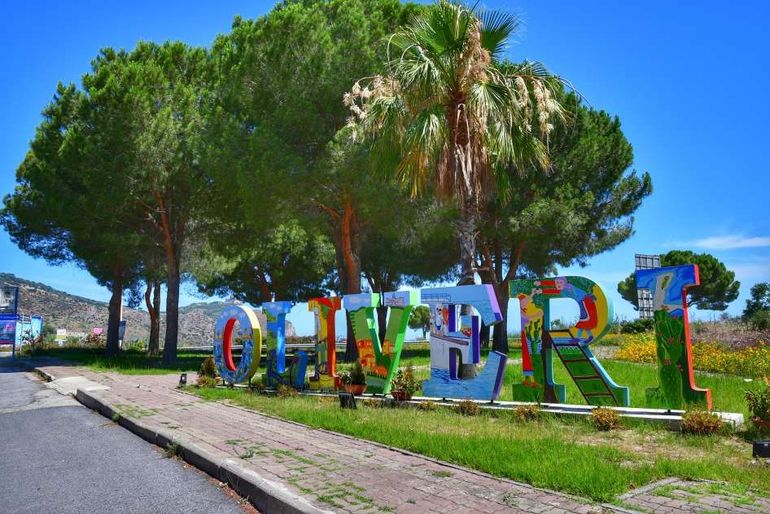
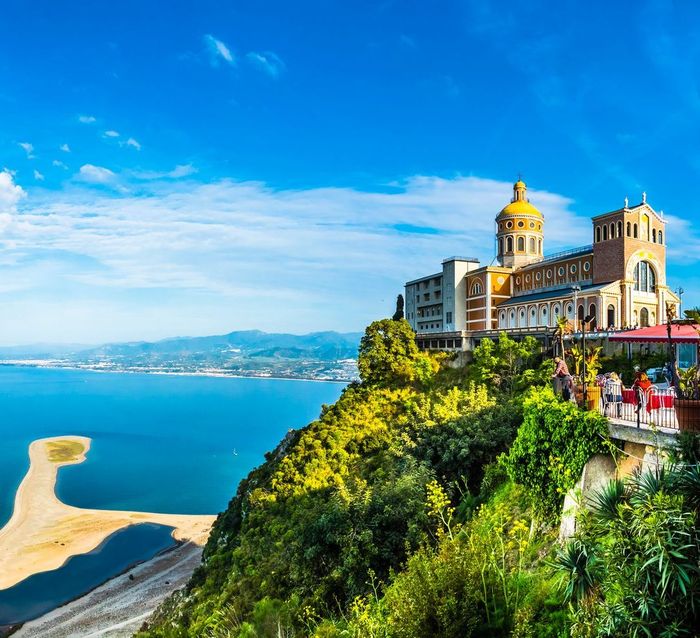
The Sanctuary of Tindari
Regarding the origin of the cult of the Madonna of Tindari , dating back to very remote times, there is no well-defined and critically verified historical information. However, there is a pious tradition that does not contain, at least from the point of view of orthodoxy, anything improbable or contradictory, and we can accept it without further ado, especially since it presents itself on a historical background.
The origin of the devotion to the Madonna Bruna seems to date back to the period of iconoclastic persecution. According to tradition, a ship returning from the East, among other things, was carrying an Image of the Madonna hidden in its hold so that it could be saved from iconoclastic persecution. While the ship was sailing the waters of the Tyrrhenian Sea, a storm suddenly arose and so it was forced to interrupt its journey and take refuge in the bay of Tindari, today Marinello.
When the storm calmed down, the sailors decided to continue their journey: they raised the anchor, hoisted the sails, began to row, but they could not move the ship. They tried and tried again, but it remained there, as if it were stuck in the harbor...
Continues
Essi allora pensarono di alleggerire il carico, ma , solo quando, tra le altre cose, scaricarono la cassa contenente il venerato Simulacro della Vergine, la nave poté muoversi e riprendere la rotta sulle onde placide del mare rabbonito.
Sono sconosciuti i luoghi di provenienza e di destinazione dell’Immagine sacra.
Partita la nave che aveva lasciato il carico, i marinai della baia di Tindari si diedero subito da fare per tirare in secco la cassa galleggiante sulla distesa del mare. Fu aperta la cassa e, con grande stupore e soddisfazione di tutti, in essa fu trovata la preziosa Immagine della Vergine.
Sorse il problema ove collocare quell’Immagine. Si decise di trasportare il Simulacro della Vergine nel luogo più alto, il più bello, al Tindari, dove già da tempo esisteva una fiorente comunità cristiana.
La tradizione che fa arrivare la statua della Madonna a Tindari all’epoca degli iconoclasti, probabilmente verso la fine del secolo VIII o nei primi decenni del secolo IX, trova motivo di credibilità nel fatto che Tindari fu sotto la dominazione dei Bizantini per circa tre secoli (535-836); che la Sicilia si oppose con energia all’eresia degli iconoclasti; che a Tindari, essendo stata sede di diocesi per circa cinque secoli, fosse fiorente la professione della fede cristiana, e quindi facile l’accoglienza della sacra immagine.
Detta ipotesi, oltre che nel contesto storico, trova ancora una qualche consistenza in un’ininterrotta tradizione pressoché unanime.
Il colle del Tindari, così suggestivo, santificato dalla presenza della Madonna, divenne così il sacro, mistico colle di Maria.
S’ignora l’autore dell’Immagine, né è possibile definire l’epoca in cui fu scolpita. Considerando lo stile e tenendo conto che la Madonna tiene tra le braccia il divin Bambino, si potrebbe concludere che essa rimonti ad un’epoca posteriore al Concilio di Efeso in cui fu definita la divina maternità di Maria; quindi probabilmente la statua è stata scolpita in Oriente tra il quinto e il sesto secolo.
La Madonna è rappresentata seduta, mentre regge in grembo il Figlio divino, che tiene la destra sollevata, benedicente. Ella inoltre porta in capo una corona di tipo orientale, una specie di turbante, ricavato nello stesso legno, decorato con leggeri arabeschi dorati.
Migliaia e migliaia di fedeli sono passati dinanzi alla Vergine pietosa, che per tutti ha avuto un sorriso ed una grazia.
Some useful information:
-
Nature reserve
Oliveri offers tourists a charming beach with a wide shoreline of coarse sand and pebbles, alternating between free beach areas and equipped lidos, easily accessible by car or on foot. Moving east, the long stretch of sand and gravel blends seamlessly with the Marinello Lakes Nature Reserve, a marine area of great natural significance. Spanning over 400 hectares, it was established in 1998.
The lagoon area, featuring brackish water lakes, undergoes constant morphological changes due to the sand and gravel deposits shaped by the Tyrrhenian Sea’s seabed activity. This dynamic environment results in the formation of temporary or semi-permanent coastal lakes, driven by shifts in the terrain and weather-sea conditions. According to the Hydrographic Institute of the Navy, the lakes’ origin dates back to between 1865 and 1895, likely due to transformations in the Timeto and Elicona streams, which deposited sediments into the sea, forming the first sandy stretches.
As a protected reserve, activities within the area must align with its unique features, such as the ever-changing lagoon environment and the diverse flora and fauna. The vegetation ranges from lacustrine plants to Mediterranean scrub and typical beach flora. The lagoon waters host endemic fish species, some quite rare, while dolphins and tuna are often seen further offshore. Bird species, both resident and migratory, are abundant, including peregrine falcons, pink flamingos, and white storks.
The reserve can be reached on foot directly from Oliveri’s beach or by taking a panoramic boat ride along the coast. These boats also serve as shuttles, dropping visitors off at the lakes’ beach or pristine coves.
Within the reserve, you'll also find the Grotta di Donna Villa, a stunning natural cave accessible only by sea. According to legend, it was once home to a sorceress who bewitched and lured sailors to devour them. When rare victims escaped, the enraged sorceress clawed the cave walls with unimaginable strength, leaving deep marks visible to this day.
The Marinello Lakes and the rocky promontory of the Tindari Sanctuary are connected by an ancient land path known as the “Coda di Volpe” (Fox Tail).
-
The Foxtail Trail
The “Coda della Volpe” trail is one of the most scenic nature trails along the coast. It connects Marinello with the Sanctuary of Tindari and spans approximately 1 km. The trail offers breathtaking views, overlooking the Marinello Lakes Nature Reserve and providing magnificent vistas of the sea towards the Aeolian Islands to the north, the Gulf of Patti to the west, and Capo Milazzo to the east. This panoramic route, once the only connection between the lakes and Tindari, is now primarily used by pilgrims heading to the Sanctuary and by hikers seeking to experience the natural beauty of the area. The trail provides not only spiritual and cultural significance but also an opportunity to immerse oneself in the stunning landscapes of the Sicilian coast.
-
Tindari Promontory
Overlooking the beautiful expanse of water, the Promontorio del Tindari stands majestically. Tindari is situated on a cliffside above the Tyrrhenian Sea, and was founded in the 4th century BC (396 BC) by Dionysius I of Syracuse to house the Syracusan mercenaries who had fought in the war against Carthage. The name of the area is derived from Tyndarus, the king of Sparta. The spectacular panorama from the top of the promontory is an experience not to be missed. Equally impressive is the silhouette of the Tindari Sanctuary, which majestically rises from the promontory. The unique landscape of this area has played a significant role in the development of the Black Madonna cult, which is housed in the Tindari Sanctuary. The sanctuary, perched at the top of the promontory, overlooks the sea and is one of those places that should be visited at least once in a lifetime.
-
History of the Madonna of Tindari
The cult of the Madonna of Tindari is closely tied to the tradition of the Madonnas of the Sea. According to legend, a ship traveling from Byzantium sought refuge from a storm in the bay of Tindari. The sculpture, transported by sea, prevented the ship from leaving the bay. The sailors, believing the cargo was too heavy, began to unload as much merchandise as possible onto the beach to lighten the hold. Only when they abandoned the statue of the Madonna could they resume sailing. The statue was then brought to the hill above and placed inside a small church, which was expanded over time to accommodate the growing number of pilgrims. After a Baroque reconstruction, the church was expanded and modernized in the late 19th century. The original church of the Black Madonna of Tindari was incorporated into the Sanctuary, similar to what happened with the Porziuncola inside Santa Maria degli Angeli in Assisi. The statue of the Madonna of Tindari is black because it was carved from Lebanese cedar wood in a style typical of Byzantine and Eastern statues around the year 1000. It was likely brought from the East, possibly Egypt, to escape iconoclastic persecution. The Black Madonna, holding the Baby Jesus in her arms and raising her right hand in a sign of blessing, is depicted as a Bassilissa, a Byzantine empress on a throne. Engraved on the throne are the words "Nigra Sum Sed Formosa," meaning "I am black but beautiful," taken from the Song of Songs. Over the centuries, the statue underwent several modifications, but in 1995, a delicate conservation restoration was carried out. The restoration, lasting seven months, involved removing later additions to reveal the original statue. Another legend tells of a mother who came to the Sanctuary to thank the Madonna for healing her sick child. Displeased with the statue's appearance, she exclaimed: "Hàju vinutu di luntana via, ppi vidiri a una cchiù bruna di mia!" (I came from far away, to see someone uglier than me!). At that moment, the child she was holding fell into the sea. In desperation, the woman prayed to the Madonna, asking for forgiveness and begging for her child’s safety. Miraculously, the waves parted, and the child emerged onto a dry strip of sand, where he was safely pulled to shore.
-
Did you know that?
Over time, the shape of the sandbar has naturally evolved to resemble the profile of a woman with a cloak cradling a child, which the faithful have come to identify as the Black Madonna.
Every year, on September 8th, for the Feast of the Black Madonna of Tindari, thousands of pilgrims and visitors from all over Sicily and beyond come to participate in the celebrations. According to tradition, pilgrims make the journey to the Sanctuary of the Madonna of Tindari on foot, ascending the challenging Coda della Volpe trail that climbs the mountainous coast.
The festival is a blend of devotion and celebration, with prayers, songs, and vibrant festivities. Alongside the spiritual aspects, the event includes stalls, gastronomic events, and folkloristic traditions, creating a lively atmosphere that combines the sacred with the picturesque beauty of the location.
-
The archaeological area of Tindari
The archaeological area of Tindari
The archaeological area of Tindari stands on the ancient Greco-Roman city of the same name Tyndaris founded by Dionysius of Syracuse as a fortress and military outpost, in honor of Tindaro, father of the Dioscuri, Castor and Pollux.
Tyndareus was king of Sparta, but was driven from the throne of the city of Laconia by his brother Hippocoon. Later, he was reinstated on the throne with the help of Heracles and married Leda with whom he had four children. However, the myth tells that Leda united with Zeus, transformed into a swan, laying an egg from which Helen was born (married to the king of Sparta, Menelaus, and the cause of the war between the Greek allies and Troy) and Pollux; and on the same night she also conceived with her husband Tyndareus Castor and Clytemnestra (married to Agamemnon, mythical king of Argolis). The two heroic twins, mortal Castor and immortal Pollux, also called Tyndarides, were venerated as protectors of sailors and their cult was very widespread in Tindari as shown by inscriptions, mosaics and coins that have survived.
Tindari occupied by the Carthaginians, led by Hannibal, in 264 BC, in 254 BC spontaneously chose to ally itself with Rome to seek protection, acquiring the status of "civitas decumana", in autonomy and freedom in exchange for the annual payment of tithes. In recognition of the loyalty of the Tindaritans, Scipio Africanus donated a superb golden statue depicting Mercury to the city. The consul Cicero, during his visit to Tindari, carried out to investigate the misdeeds of Verres, judged the city so prosperous and beautiful that he gave it the title of "nobilissima civitas". The city owes its end first to a landslide, then to an earthquake around 365 AD, and finally to the devastation of the Arabs in 836 AD
In the archaeological site it is possible to visit:
• The Greco-Roman theatre built with sandstone blocks by the Greeks in the 3rd century BC, remodelled by the Romans to adapt it to circus games. It was created from the natural conformation of the hill in which the steps of the seats were dug, with a capacity of around 3000 seats. Since 1956 it has been reopened to the public and plays and other events are held there. Since 2001, together with the theatre of Taormina, it has hosted the Festival del teatro dei due mari;
• part of the city's urban layout which was crossed by three large parallel arteries (decumani) in an east-west direction, intersected perpendicularly by narrower streets (cardines) in a south-north direction;
• the remains of two peristyle dwellings with tablinium;
• the public baths, located on the upper terrace on the decumanus, dating back to the middle imperial age. On the floors of the thermal rooms you can admire black and white mosaics with various depictions including the symbols of Tyndaris and Trinacria, Dionysian scenes and marine creatures, dating back to between the end of the 2nd and the beginning of the 3rd century AD. There is a courtyard, a frigidarium with a bathtub, two tepidaria, a calidarium;
• the monumental propylaeum built by the Romans with large sandstone stones and intended as a Basilica for public meetings, or as a Gymnasium for athletic exercises, is a building erected in the late imperial age, with three floors, of which only part of the lower one remains. It is a large nave with arches. The gallery is accessible only at the two ends, flanked on the sides by two open-air roads that opened onto the agora through the openings that were part of the façade. The basilica housed the golden statue of Mercury, adjacent to it the equestrian monument of Marcus Claudius Marcellus and the statue depicting Verres. The latter was removed after the expulsion of the propraetor Verres from Tindari and Sicily.
• the remains of the Cyclopean walls, built by Dionysius; a tower (16th - 17th century), located near the theatre.
• The Museum or Antiquarium, located at the entrance to the excavations, divided into five rooms in which are exhibited marble statues of toga-wearing figures, a head of the emperor Augustus, a Corinthian capital, collections of Greek and Roman epigraphs, inscriptions and funerary cippi, tombstones, Bronze Age ceramics, mosaics, coins, medals, everyday furnishings, Roman lamps from the Republican-Imperial age, work tools and many other historical finds discovered on site.



